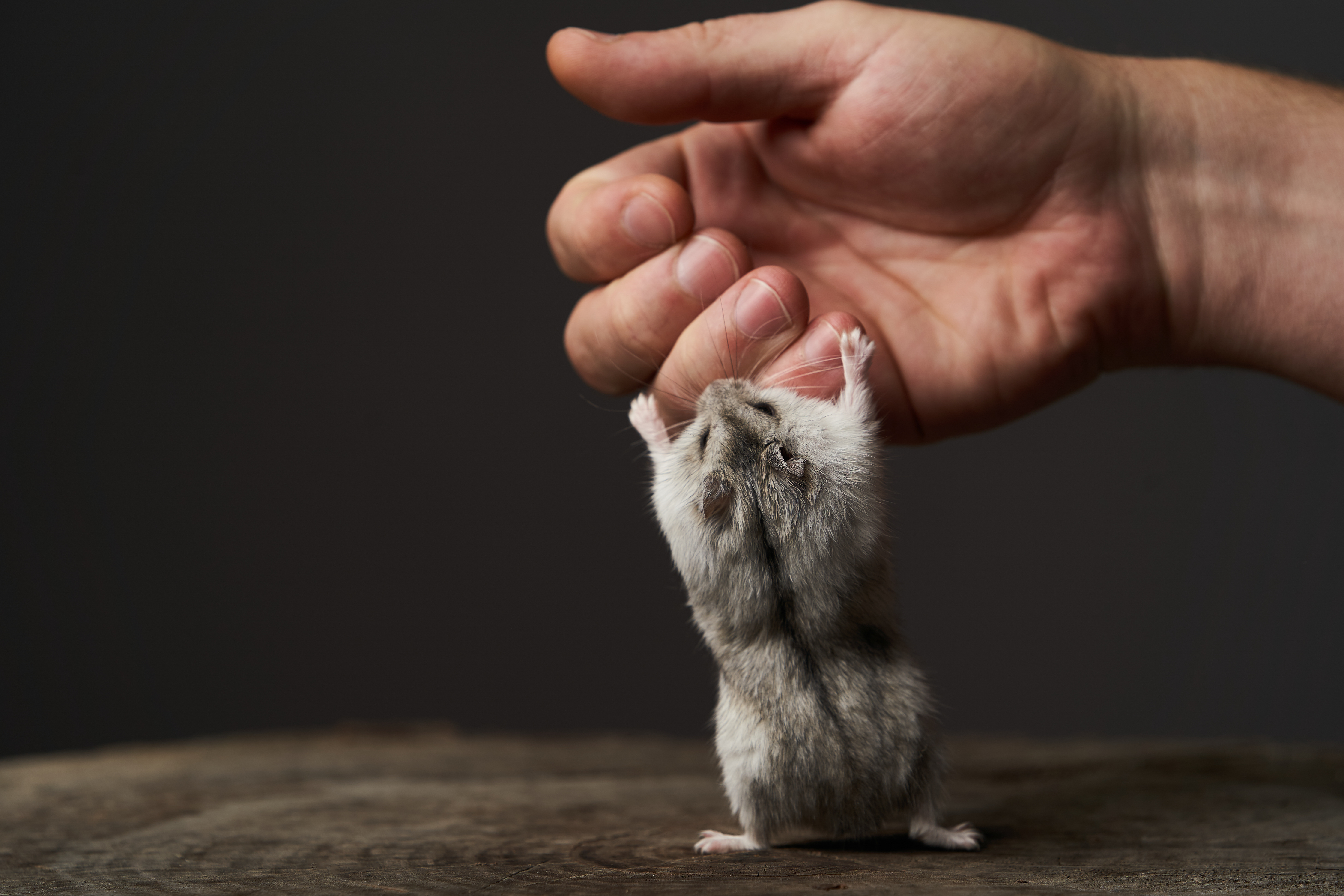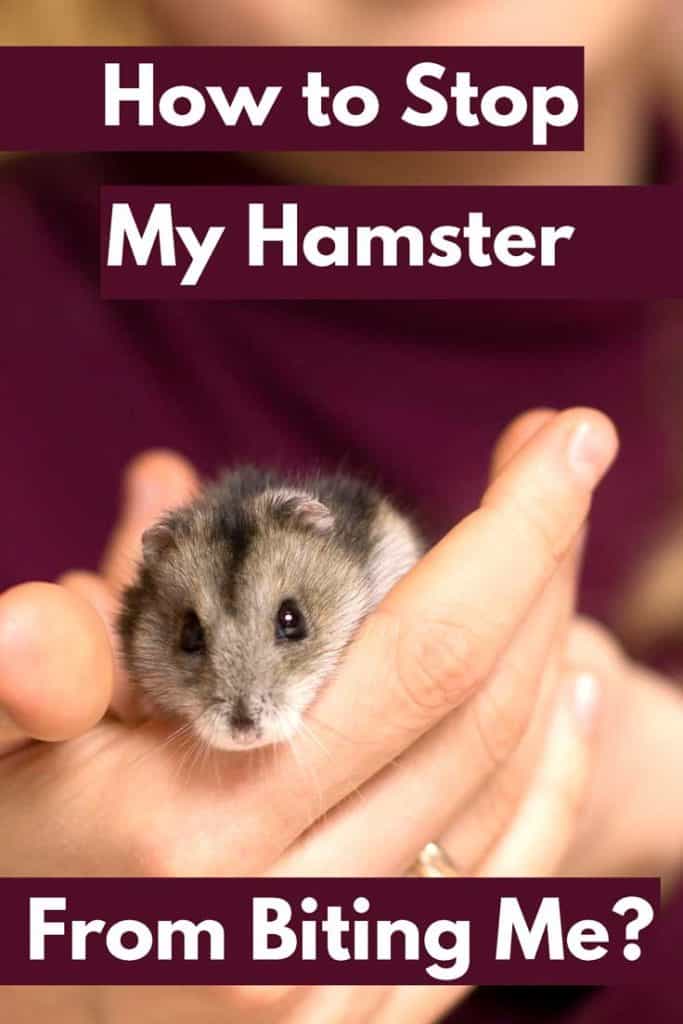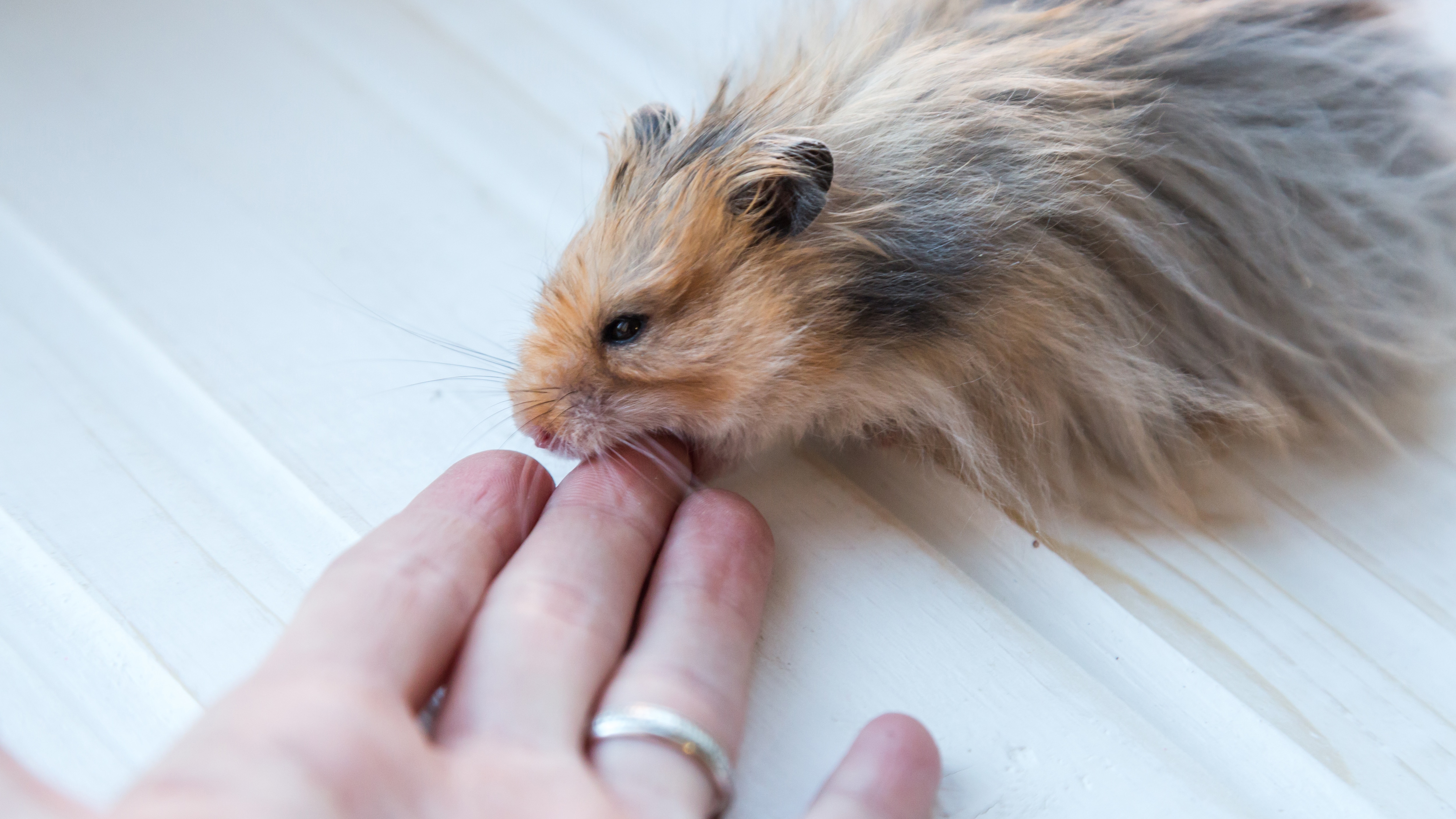If you’re a hamster owner, you know how important it is to keep your furry friend happy and healthy. One common issue that can arise is getting bitten by your hamster. However, with a few simple tips and tricks, you can prevent bites by learning how to avoid sudden movements that may startle your hamster. Keep reading to find out how!

1. Approach Slowly
Approaching a hamster slowly is key to preventing them from feeling scared and biting. As mentioned earlier, hamsters cannot see very well, but they notice movements. Therefore, it is essential to approach them slowly to avoid startling them. It is also best to talk in a low, soft voice when you near your hamster to alert them of your presence without alarming them. Furthermore, always be gentle and move slowly when handling your hamster to build trust and prevent biting. Finally, wash your hands before handling them to ensure they do not pick up a foreign scent that may scare them. Overall, approach your hamster slowly and with care, and you might never experience a bite again.

2. Gradual Movements
Another crucial step in preventing hamster bites is to make gradual movements. When approaching the hamster’s cage, it’s important to avoid sudden movements that can startle the pet. Instead, move slowly and talk in a soft, low voice to let your hamster know you’re there. When picking up your hamster, always use both hands and avoid any quick, jerky movements. Gradual movements are especially important if you’re dealing with a new hamster or one that’s not used to being handled. With patience and gentle movements, your hamster will feel more comfortable and secure, reducing the risk of bites. Remember, to build trust with your furry friend, it’s important to approach slowly, make gradual movements, and always be gentle.

3. Give Treats
Another way to prevent hamster bites is by giving treats to your pet. This can help them associate you with positive experiences and increase their comfort level around you. As mentioned earlier, it’s important to know your hamster’s favorite treats and offer them as a reward for good behavior. When giving treats, approach your hamster slowly and use gentle movements to avoid startling them. Remember, patience is key when bonding with your pet. By avoiding sudden movements and offering treats, you can create a positive and trusting relationship with your hamster. Don’t forget to wash your hands before handling treats and avoid using fruity soaps that may irritate their scent-sensitive noses. By being gentle and scent-aware, you can reduce the likelihood of your hamster biting you.

4. Don’t Correct
When trying to interact with a hamster, it’s important to remember not to correct them. Hamsters are small and vulnerable animals, and they may not understand what you want from them. Trying to correct them may only confuse and upset them, leading to defensive behavior such as biting.
Instead, the focus should be on positive reinforcement. Rewarding good behavior with treats and praise can create a more trusting relationship between you and your hamster. Over time, your hamster will learn what you expect from them without the need for harsh correction.
Patience and gentleness are key when handling a hamster. Remember to approach slowly, give treats, talk in a soft voice, and be aware of your scent. By following these tips, you can build a strong and loving bond with your furry friend, free from any unwanted biting behavior.

5. Talk in a Soft Voice
Talking in a soft voice is crucial when approaching a hamster. This is another way to prevent scary movements and help build trust between you and your furry friend. As mentioned before, hamsters rely mainly on nonverbal cues to communicate, so using a calm voice can help ease any potential fear. It’s recommended to spend time near the cage, talking to your hamster softly and even singing to it. This can have a positive impact on their mood and help them become more comfortable with you. Remember to be patient and avoid any sudden movements that might startle them. Over time, your hamster will become more confident and less likely to bite.

6. Patience is Key
Patience is key when it comes to handling a hamster. It’s important to take your time and earn your hamster’s trust gradually. Don’t force your hamster to interact with you or try to correct any behavior through punishment. Instead, try hand feeding the hamster treats inside the cage and let the hamster come to you. With patience, you can eventually build a bond with your hamster and have them comfortably travel around with you. Remember to handle your hamster gently and avoid any sudden movements. It’s also crucial to always wash your hands and avoid using fruity soaps that may bother your hamster’s sensitive nose. With patience and understanding, you and your hamster can have a joyful relationship.

7. Wash Your Hands
When it comes to handling a hamster, it’s important to remember that they have a keen sense of smell. That’s why it’s essential to wash your hands thoroughly before handling your pet, as any trace of food scent could cause them to mistake your fingers for a snack. Avoid using soaps with fruity scents, which could also trigger their instincts to bite. In addition to being hygienic, washing your hands demonstrates a level of respect for your furry friend’s unique preferences and needs. By following these simple steps in combination with the other tips in this blog, you’ll be on your way to building a happy and trusting relationship with your hamster.

8. Avoid Fruity Soaps
When handling a hamster, it’s important to remember that they are sensitive creatures. One of the ways to keep them calm is to avoid any strong smells, including using fruity soaps. By doing this, it can prevent any agitation or discomfort for the hamster, ultimately reducing the likelihood of biting. This is why it’s recommended to wash your hands with scent-free soap before handling a hamster. Additionally, being gentle and patient with your furry friend can go a long way in building trust and preventing bites. Remember, a happy hamster is a healthy hamster.

9. Be Gentle
Continuing with the tips on preventing hamster bites, it’s important to remember to always be gentle. Hamsters are delicate creatures and can easily be hurt or scared by rough handling. So, whenever you need to pick up or interact with your hamster, be sure to do it in a gentle and calm manner. Encourage them to come to you with treats and avoid using force or correction. When speaking to them, use a soft and soothing voice to help them feel safe and comfortable with you. Patience is key when trying to earn the trust of your hamster, so take your time and be patient in your approach. Always wash your hands before and after handling your hamster to prevent any germs from harming them, and avoid using fruity soaps that could irritate their sensitive noses. By being gentle and considerate of your hamster’s needs, you’ll be on your way to forming a long-lasting and loving bond with your furry friend.

10. Scent Awareness
When it comes to handling hamsters, scent awareness plays a crucial role in preventing bites. As mentioned previously in this blog, hamsters have a strong sense of smell and will be able to detect any lingering scents on your hands. It’s important to wash your hands with scent-free soap before handling your hamster to remove any enticing smells that may trigger a bite. Additionally, avoid using soaps with fruity scents as these may actually attract your hamster rather than repel them. Being aware of your own scent and ensuring that it is neutral will go a long way in preventing bites and maintaining a positive relationship with your furry friend.
- Hamster Comparison: Which Breed Is The Perfect Fit For You? - April 15, 2024
- From Price To Value: Understanding The True Cost Of Owning A Hamster - April 15, 2024
- Harmony In Hamster Homes: Exploring Hamster Compatibility With Other Pets - April 15, 2024